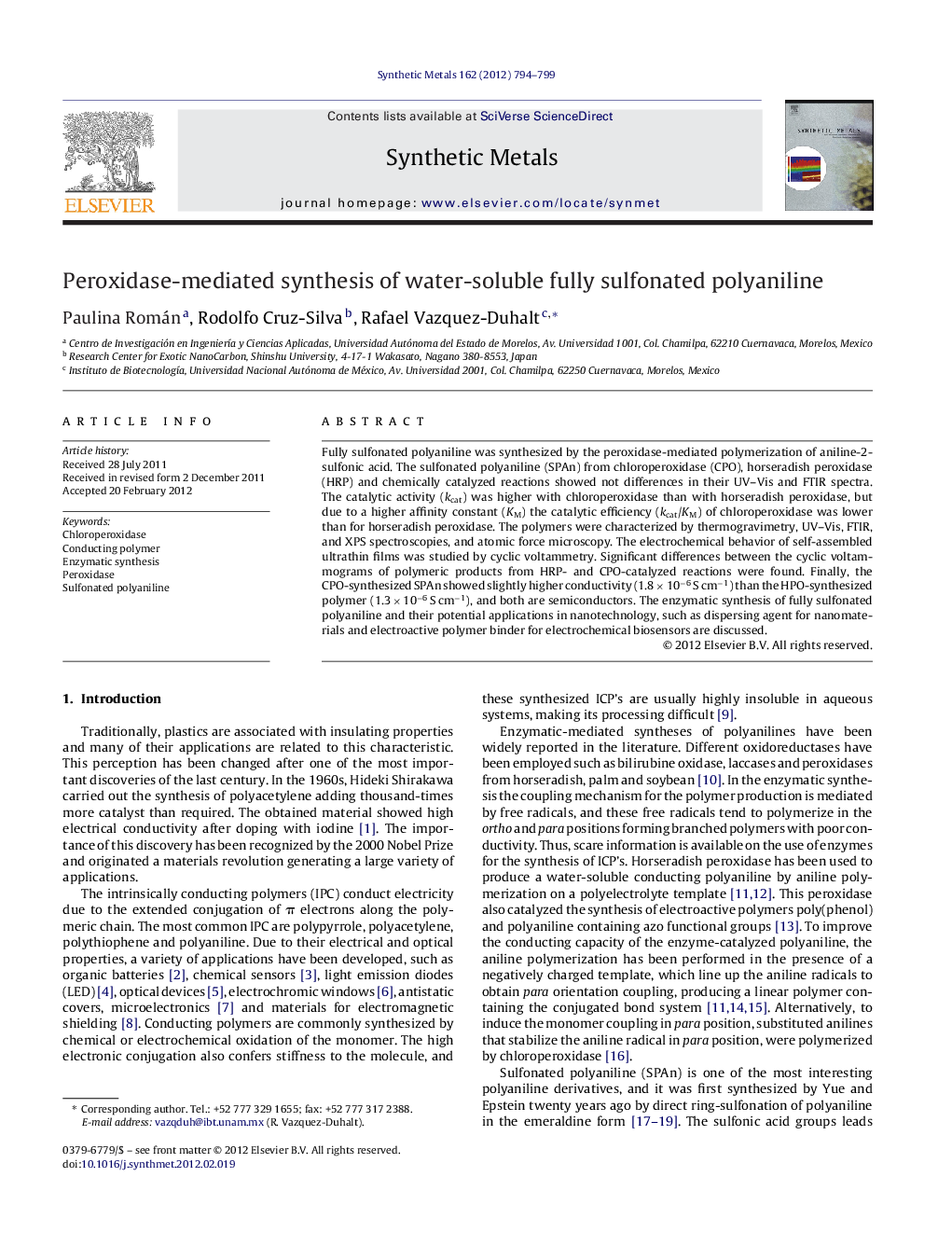| Article ID | Journal | Published Year | Pages | File Type |
|---|---|---|---|---|
| 1442122 | Synthetic Metals | 2012 | 6 Pages |
Fully sulfonated polyaniline was synthesized by the peroxidase-mediated polymerization of aniline-2-sulfonic acid. The sulfonated polyaniline (SPAn) from chloroperoxidase (CPO), horseradish peroxidase (HRP) and chemically catalyzed reactions showed not differences in their UV–Vis and FTIR spectra. The catalytic activity (kcat) was higher with chloroperoxidase than with horseradish peroxidase, but due to a higher affinity constant (KM) the catalytic efficiency (kcat/KM) of chloroperoxidase was lower than for horseradish peroxidase. The polymers were characterized by thermogravimetry, UV–Vis, FTIR, and XPS spectroscopies, and atomic force microscopy. The electrochemical behavior of self-assembled ultrathin films was studied by cyclic voltammetry. Significant differences between the cyclic voltammograms of polymeric products from HRP- and CPO-catalyzed reactions were found. Finally, the CPO-synthesized SPAn showed slightly higher conductivity (1.8 × 10−6 S cm−1) than the HPO-synthesized polymer (1.3 × 10−6 S cm−1), and both are semiconductors. The enzymatic synthesis of fully sulfonated polyaniline and their potential applications in nanotechnology, such as dispersing agent for nanomaterials and electroactive polymer binder for electrochemical biosensors are discussed.
Graphical abstractFigure optionsDownload full-size imageDownload as PowerPoint slideHighlights► Fully sulfonated polyaniline was synthesized by the peroxidase-mediated reaction. ► Chloroperoxidase and horseradish peroxidase were used as catalysts. ► Sulfonated polyaniline was spectroscopically and electrochemically characterized.
